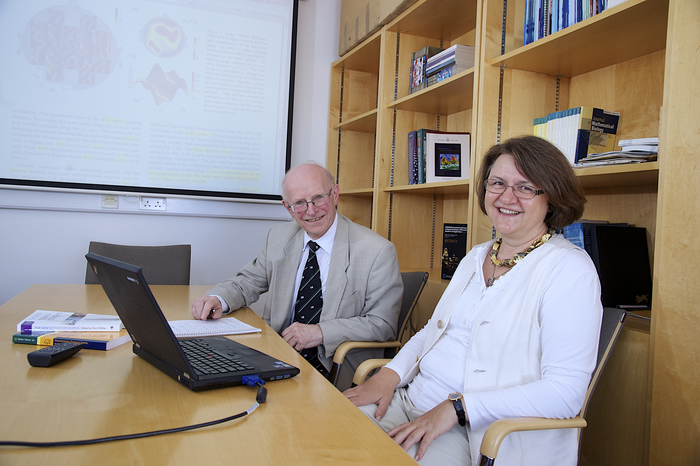An international team led by Lancaster University has discovered how electrons can slither rapidly to-and-fro across a quantum surface when driven by external forces.

Credit: Lancaster University
An international team led by Lancaster University has discovered how electrons can slither rapidly to-and-fro across a quantum surface when driven by external forces.
The research, published in Physical Review B, has enabled the visualisation of the motion of electrons on liquid helium for the first time.
The experiments, carried out in Riken, Japan, by Kostyantyn Nasyedkin (now at Oak Ridge National Laboratory, USA) in the lab of Kimitoshi Kono (now in Taiwan at Yang Ming Chiao Tung University) detected unusual oscillations whose frequencies varied in time. Although it was unclear how the electrons were moving in the darkness and extreme cold at the bottom of the cryostat, it was evident that the time-variations were much like those seen in living systems.
Professor Kono said: “At very low temperatures, the surface of liquid helium is an exceptionally slippery place. Interesting things happen there, and it is important because of the potential for quantum computing using electrons on the helium surface.
“Such electrons move very easily because, with a slippery surface below and a vacuum above, there is nothing to slow them down.”
The Riken data were analysed at Lancaster University using methods developed by Professor Aneta Stefanovska and her group, mainly for biological applications. Lancaster PhD student Hala Siddiq (now at Jazan University, Saudi Arabia) applied these methods. She and her principal supervisor Professor Stefanovska interpreted the results in collaboration with Riken’s team and Lancaster experts in low temperature physics, Dmitry Zmeev, Yuri Pashkin and Peter McClintock.
The work has enabled the electrons’ motion to be visualised, showing how they slide around in part-circular and part-radial patterns of motion in the vacuum above the liquid surface. An additional complication revealed by Siddiq’s analysis is that the surface itself is moving gently in up-and-down vertical motion. Moreover, her results indicate a combination of quantum and classical dynamics.
Professor Stefanovska said: “Appreciation of these features will be important for practical applications across wide areas of physics, life sciences, and even sociology. Namely, they provide a paradigmatic example for the physics of non-isolated systems and for the mathematics of non-autonomous systems. Moreover, the experimental model can be used to study properties of living systems, and similar technical or societal systems, in a very controlled way.”
Journal
Physical Review B
DOI
10.1103/PhysRevB.107.104501
Method of Research
Experimental study
Subject of Research
Not applicable
Article Title
Visualization of oscillatory electron dynamics on the surface of liquid helium
Article Publication Date
1-Mar-2023
COI Statement
n/a




